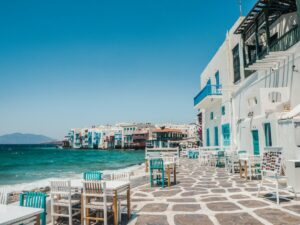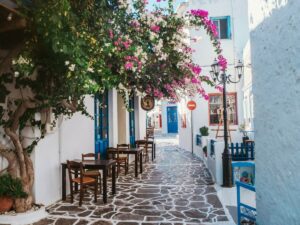Greece is known for its beautiful Cycladic architecture and timeless aesthetic, with many of its infamous buildings scattered around the many islands that make up this stunning country.
From Santorini to Mykonos, Paros and Naxos, each island offers something unique in terms of style and history when it comes to their distinctive architectural features. Take a journey with us as we explore the cycladic architecture that has stood since antiquity – from ancient temples to picturesque churches adorned with the colours of the Greek flag – and fall in love with the beauty and history of the Cyclades Islands.
Santorini
Santorini is a Greek island with an incredible array of architectural styles, from Venetian to Cycladic and Neoclassical. The infamous Venetian castle in Oia is one of the island’s most impressive structures, dating back centuries and standing on the islands steep cliffs as testament to the powerful trading empire that once ruled here. Visitors can explore this majestic fortress, admiring its grandeur while learning about Santorini’s fascinating history.
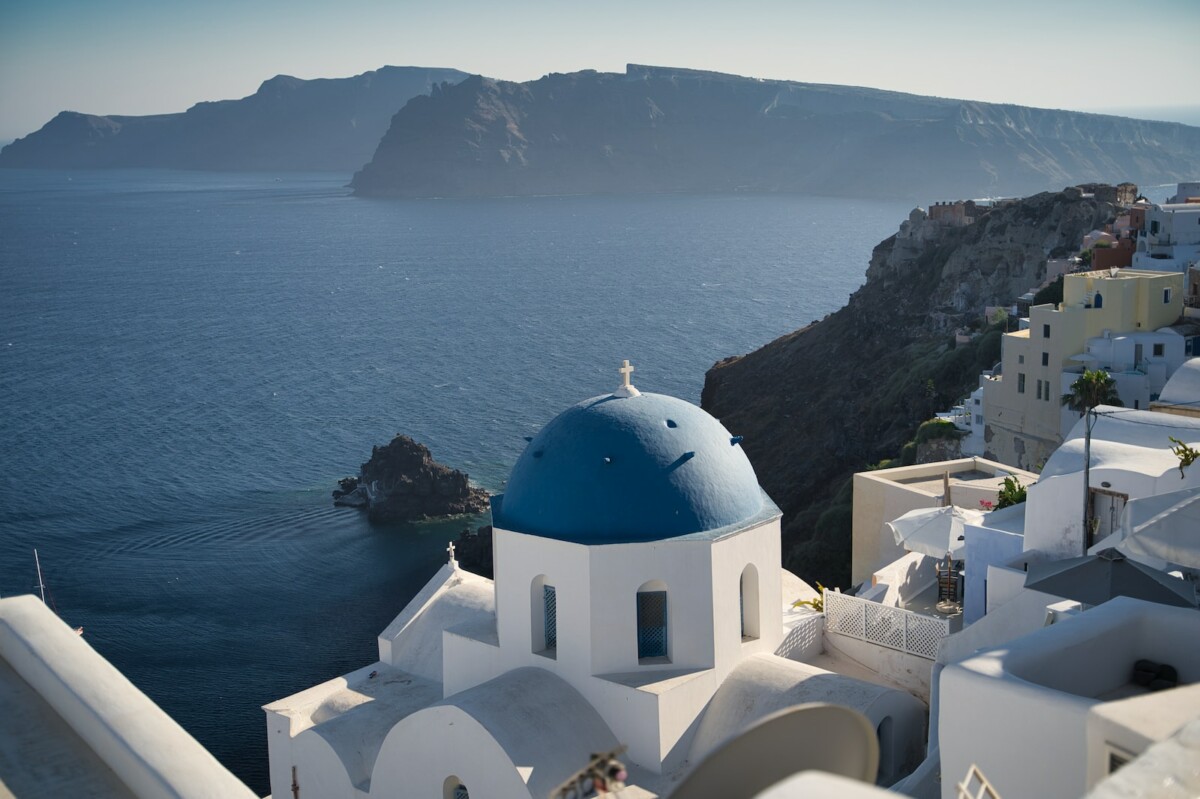

Neoclassical architecture can be seen throughout Santorini as well, with many churches and other public buildings constructed in this style during the 19th century. It features columns, domes, pediments, arches and other elements inspired by ancient Greek temples such as those at Acropolis in Athens or Delphi near Mount Parnassus. Exploring these places can provide a look into the lifestyle of Greeks during their period under Ottoman control before they declared independence in 1832.
Yet the Cycladic buildings found in Santorini is what really draws you in. Santorini’s infamous Cycladic features are easily recognizable, with its most prominent characteristic being the dazzling whitewashed walls, flat roofs, and bright blue domes or intricate wooden balconies that all add to the charm of the island.
Take a stroll through one of the island’s many quaint villages full of traditional homes, admire the island’s breathtaking views from atop one of its many hillsides, and uncover the history of Santorini’s fascinating past and present residents.
Mykonos
Mykonos, renowned for its iconic windmills, is one of the most beloved Greek islands. These iconic structures are a reminder of Mykonos’s rich history and culture, as they were originally used to grind grain during the Venetian occupation. Today, these mills stand tall in their picturesque locations across the island, making them an ideal spot for tourists to take photos or simply admire their beauty.
The churches and monasteries in Mykonos town are also worth exploring. From traditional whitewashed chapels to grand Byzantine-style buildings, there’s something for everyone here. The Church of Panagia Paraportiani is particularly impressive and testement to greek architecture – being built over five centuries ago from stones taken from nearby ruins and featuring four distinct architectural styles in one building.
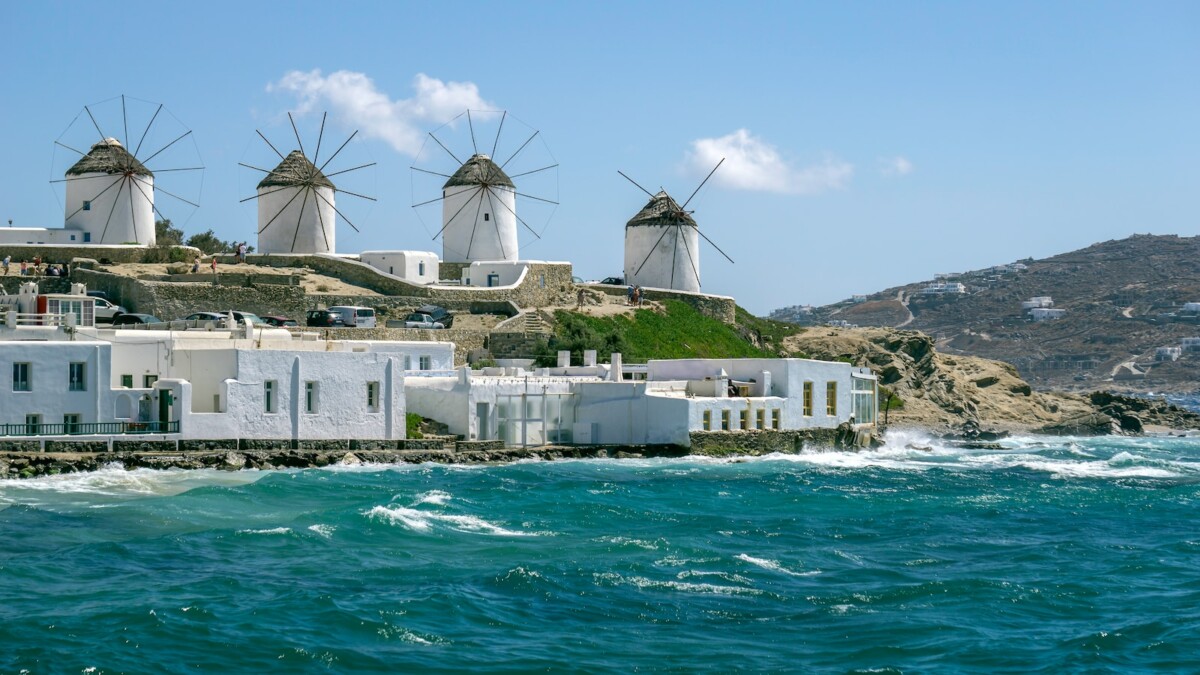

When exploring the islands Cycladic architecture, visitors should not miss out on seeing some of the postcard-perfect areas such as little Venice that make up much of Mykonos’ aesthetic. These homes often feature beautiful balconies decorated with colorful bougainvillea flowers, shuttered windows painted blue or white, infamous blue domes and intricate stucco designs around doorways.
Take a wander down one the island’s many winding streets lined with these charming, cycladic style homes and get a taste of the days-gone-by, when life moved at a slower pace on this idyllic island.
Paros
Paros is a Greek isle, set in the Aegean Sea, famed for its Cycladic architecture and stunning scenery. The Venetian castles of Paros are some of the most impressive sights on the island. Constructed during the 15th century to safeguard their interests in the region, they still remain today as symbols of power and might.
Traditional villages also dot Paros’ landscape, offering visitors a glimpse into local life and culture. Boasting picturesque cobblestone streets lined with houses that resemble a white canvas, gleaming light blue churches, and traditional tavernas serving up delicious dishes made from fresh ingredients, these villages provide an authentic experience that will stay with you long after your visit has ended.
The Byzantine churches found throughout Paros are another must-see attraction for travelers who wish to experience the island’s rich history and culture. These churches, erected by Byzantine leaders in the 9th to 12th centuries, were meant to propagate Christianity throughout Greece. Today, they serve as reminders of this era, standing proudly as reminders of how far back civilization goes on Paros Island.
Visitors can explore these ancient monuments while taking in stunning views of nearby islands and mountains, discover the many layers of Paros architectural history, and catch a glimpse of how life once was on this charming island.
Naxos
Naxos is an ancient island, boasting a plethora of ruins and temples dedicated to Apollo or Dionysus that date back centuries. Visitors can explore remains of ancient temples dedicated to Apollo or Dionysus, along with remnants of old fortifications built by earlier civilizations such as the Minoans or Mycenaeans, offering a glimpse into life during antiquity in Greece’s Cyclades region.
The Venetians left their mark on Naxos with the construction of several imposing towers. These watchtowers, erected by the Venetians, served as a safeguard against any potential attackers. The most famous tower is located at Apollonas, while others can be found scattered throughout Chora and other villages on the island. These towers are a testament to Naxos’ turbulent past and provide visitors with an opportunity to explore its rich history up close.


For those seeking a tranquil respite or just wanting to take in the local ambiance, these picturesque villages like Apeiranthos and Filoti will not disappoint. Cobblestone streets lined with white-washed homes boasting colorful shutters and overflowing flower boxes provide an idyllic backdrop of rolling hillsides peppered with olive groves and vineyards stretching into the horizon.
With its wealth of archaeological sites, traditional villages full of characterful architecture, plus incredible views over sweeping countryside – it’s easy to see why so many people flock here every year.
FAQs
What is the architecture of the Cyclades?
The Cycladic islands are an archipelago of islands situated in the Aegean Sea, boasting a unique architectural style that combines Venetian, Ottoman and traditional Greek influences. Its distinguishable features include whitewashed walls with brightly painted doors and window frames. Churches often have bell towers topped by domes or cupolas while windmills dot many hilltops throughout the islands.
What are the features of Cycladic architecture?
The Cyclades is known for their distinctive architecture, which is characterized by its simplicity and geometric shapes. The buildings typically have flat roofs, unique blue accents, small windows and whitewashed walls to protect you from the strong aegean sun.
Other features include a lack of ornamentation or decoration; the use of local stone such as marble; simple construction techniques; low-pitched roofs to protect against strong winds; and enclosed courtyards surrounded by high walls.
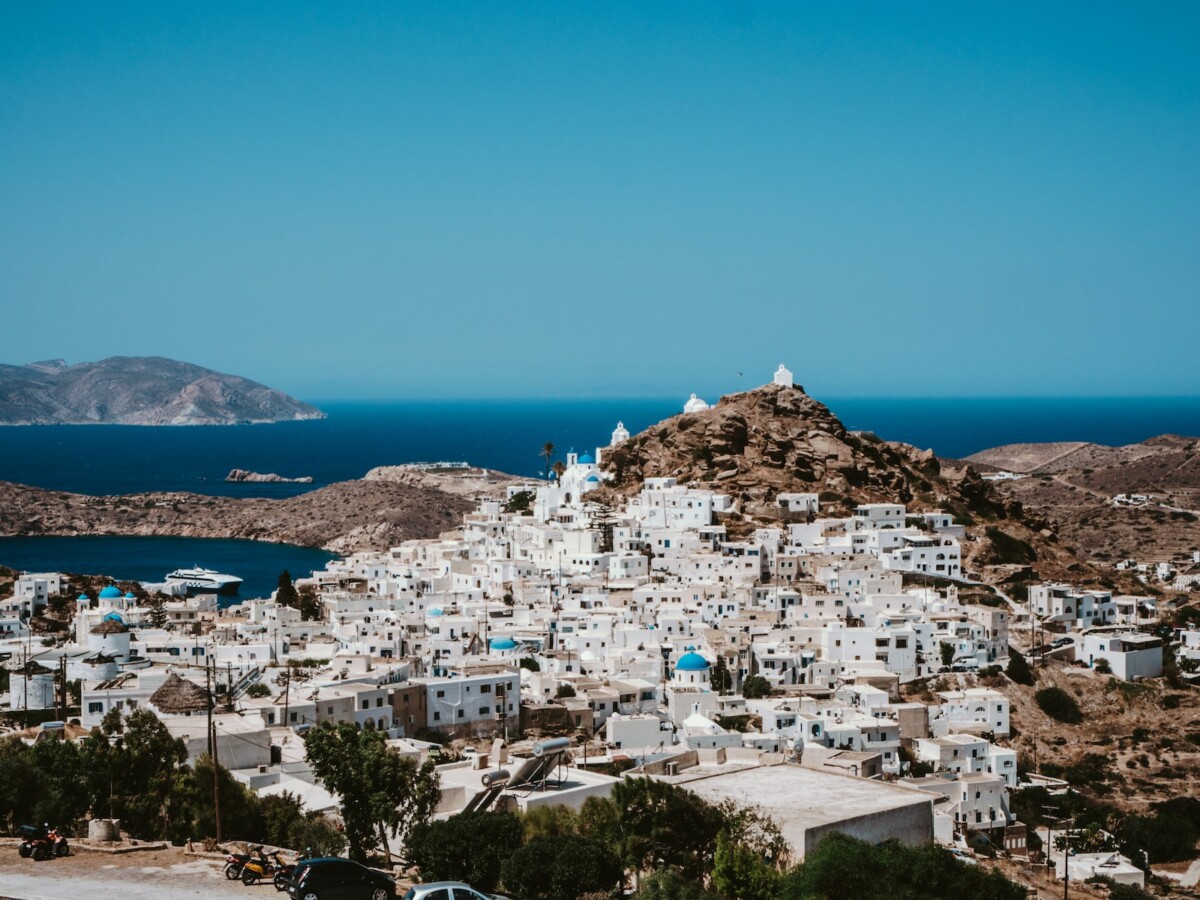

What are Cycladic houses made of?
Cycladic-style houses are typically made of stone, with thick walls and flat roofs. The interiors usually consist of white-washed plastered walls, marble floors and simple furniture. These traditional homes were designed to resist the intense Mediterranean climate and shield against strong winds during summer. In some cases, wooden doors or shutters may be used for additional insulation against heat loss in winter months.
How old is Cycladic architecture?
Originating in the 3rd millennium BC, this style of architecture was used throughout the Cyclades due to its robust design and protection against the blazing summer sun and strong winter winds. Still known and loved today, the design of the original buildings are testament to the relationship between man and nature.
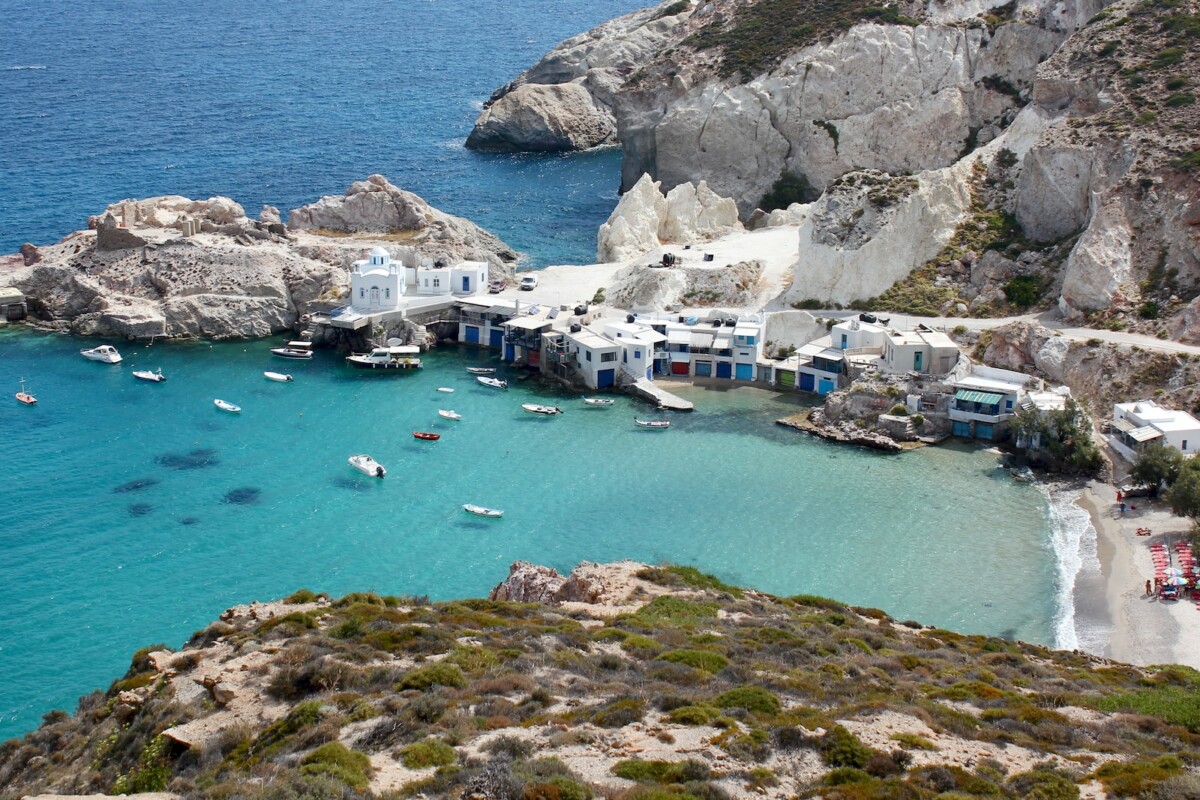

Conclusion
The Cycladic style serves to keep the residents of these Greek islands protected year-round, yet offers some truly remarkable architectural wonders. From the whitewashed walls and blue-domed churches of Santorini to the classic Mykonian windmills, or the colorful homes of Paros and the ancient structures of Naxos.
Whether you’re looking for traditional villages or awe-inspiring monuments, there is something special about each island’s unique cycladic architecture waiting to be discovered.










